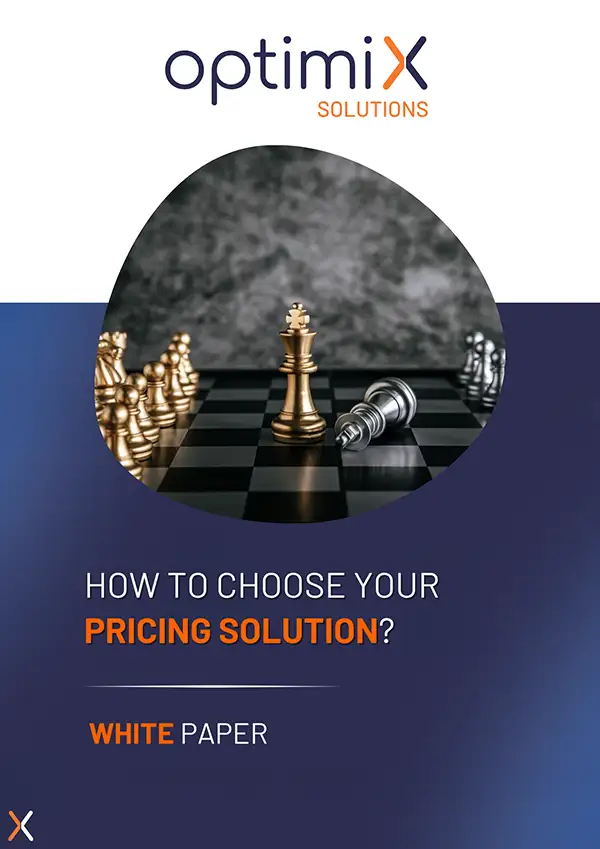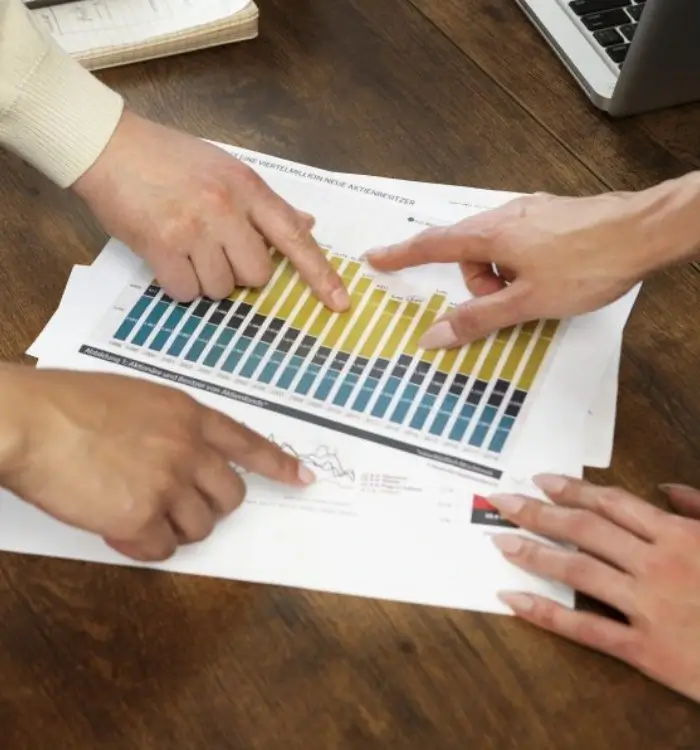The question of pricing is at the heart of every B2C manager’s concerns: how to offer attractive prices without eroding margins? This dilemma, exacerbated by online price transparency, automated online price quotes and the agility of competitors, is a real headache for many retailers. To ignore this reality is to run the risk of customers turning to the competition, and seeing margins eroded.
This article shows how a rigorous competitive analysis, centered on price and supported by a online price survey is not a luxury, but a brand’s most effective shield for transforming this dilemma into a powerful growth lever. In this step-by-step guide, you’ll learn how to set up a solid price watch using the digital tools best suited to your sector.
Why is competitive pricing analysis essential?
Competitive pricinganalysis is more than just monitoring what competitors are doing. It is a strategic approach that enables brands to :
- Identify their price positioning: Is a brand perceived as a premium player, a discounter, or as average? This perception is crucial to the brand’s image.
- Detecting opportunities and threats: An in-depth analysis can reveal market niches where it is possible to raise prices without losing market share, or, conversely, areas where the brand is too expensive and risks losing customers.
- Optimize margins: By understanding competitors’ pricing strategies, a brand can adjust its own prices to maximize profits on each product, rather than adopting a one-size-fits-all approach.
- React proactively: Anticipate competitors’ moves and quickly adapt your strategy to maintain a competitive edge.
- Justifying prices: Solid analysis provides tangible data to justify pricing decisions internally and communicate them effectively to sales teams.
Key stages in an effective competitive pricing analysis
To implement a pricing strategy strategy, it is advisable to follow these steps
Identify competitors.
The first step is to identify who your competitors really are, beyond the obvious. It’s important not to limit yourself to direct competitors offering the same products. It’s also important to consider indirect competitors (substitute products) and potential new entrants.
- List direct competitors: those who sell similar products and target the same customer base.
- Identify e-commerce players: Pure players often have different cost structures and can offer very aggressive prices.
- Consider marketplaces: These have become essential places where customers compare prices.
To find out which competitors to keep an eye on, we invite you to read our full article on : How to define the competition in your pricing strategy.
Choosing products to monitor
Choosing which products to monitor is crucial. Based on your business priorities and challenges, you identify which products to monitor. It’s not necessary to monitor your entire catalog. It’s far more effective to focus on the products that have the greatest impact on your sales and brand image.
Prioritize best-sellers, those with the highest sales volume. Also include loss-leader products, whose prices are often compared by consumers (such as basic or everyday items), as they strongly influence the perception of your prices. Strategic products are also crucial, as they directly define your market positioning.
Finally, don’t forget “white label” or generic products, if they are part of your offer, as monitoring them can reveal unexpected opportunities in terms of price positioning.
Competitor catalog analysis: what data should be collected?
An effective catalog analysis is based on competitor price monitoring by collecting accurate and exhaustive data. What data should be collected to analyze a competitor’s catalog? To get a complete picture of your competitors’ pricing strategies, focus on the following key information:
- Sales prices incl. VAT and promotions: This is the most obvious and critical piece of data. It’s essential to note the posted prices, as well as any discounts, special offers or promotions.
- Product details: Go beyond simple price by noting product names, formats (size, volume, weight), brands, any labels (organic, fair trade, local), or even specific indicators such as the Nutri-score if relevant to your sector. These elements influence the perception of value.
- Commercial terms: Prices aren’t the only deciding factor. Also collect information on delivery charges, return policies, volume discounts, or any other commercial advantages offered by your competitors.
- Channels of availability: Data must be collected where your customers compare: both data available in-store (via field surveys or mystery visits) and data available on your competitors’ e-commerce sites.
To automate and optimize this collection process, we have developed XPA price monitoring tools can be used. Our pricing solutions allow you to automate monitoring via web scraping for online data.
Harmonize and compare data with advanced ia algorithms
Comparing prices only makes sense if products are truly comparable. One of the major challenges is therefore product matching, i.e. the identification of equivalent products between your catalog and those of your competitors. You’ll need product matching software coupled with AI algorithms to automatically harmonize product attributes, even with different names, in order to obtain a reliable benchmark.
Competitive price analysis: Calculating price positioning indices
Once price data has been collected and made comparable, the next step is to calculate Price Positioning Indices (PPI). These indices are essential for accurately assessing a brand’s competitiveness in the marketplace.
- Overall PPI PPI: This is the ratio between the average price of your products and the average price of competing products across your entire monitored assortment. A PPI of 100 indicates perfect alignment, while a PPI over 100 suggests that your prices are higher on average, and vice versa.
- PPI by segment, brand, range, format, etc. Beyond the global vision, it’s crucial to segment the PPI. This enables you to understand your specific positioning for different product categories (e.g. fresh vs. dry products), for each brand you sell or produce, by price range (entry-level, mid-range, premium), or by format (small, medium, large). This granularity is essential for targeted strategic adjustments.
This data makes it easy to visualize under- or over-valued products compared to the market. Tools such as Optimix offer interactive dashboards (heatmaps, radars, SWOT analyses) to make these differences immediately understandable and exploitable.
However, analysis doesn’t stop with PPIs. For a complete picture of your price performance and that of your competitors, other Key Performance Indicators (KPIs) are essential:
- Competitive price coverage rate This KPI measures the percentage of your products for which you have comparable pricing data with your competitors. A high rate guarantees the relevance of your analysis.
- Competitive pricing trends Track how your competitors’ prices change over time. This includes the frequency of changes, the extent of increases or decreases, and the periods when these adjustments take place (e.g., before the holidays, during sales).
- Depth and frequency of competitive promotions Analyze not only when competitors run promotions, but also how intense they are (percentage discount) and duration. This helps you plan your own promotional campaigns more effectively.
- Psychological pricing Identify whether competitors are using prices ending in .99, .95, or round numbers, and assess the perceived impact on the consumer.
- Availability of competing stocks A low price only makes sense if the product is in stock. Monitoring competitors’ availability can reveal opportunities to adjust your own prices if their stocks are low.
- Hidden or additional costs Take into account delivery charges, installation costs, extended warranties, etc., which can affect the total price paid by the customer to your competitors.
By combining these KPIs with your PPI analysis, you build a robust, multi-dimensional understanding of pricing dynamics in your market. This enables you to make informed decisions to optimize your own pricing strategies and maintain your competitiveness.
Competitive pricing analysis: Identifying pricing adjustment opportunities
The main aim of competitive analysis is not simply to identify the prices charged by your competitors. It also involves identifying strategic adjustment points that will enable a brand to optimize its competitiveness while protecting its margins. To achieve this, several approaches are essential:
- Set up automatic alignment rules by range or segment : Rather than adjusting each price manually, a brand can define automatic rules based on its desired positioning. For example, decide that products in a “premium” range should always be +10% above the average price of competitors, or that items in an “economy” range should be -5% below. These rules, based on PPIs and other KPIs, enable us to be reactive and consistent in our pricing policy.
- Simulate the impact on margins and sales: Before changing a price, it’s crucial to assess the potential consequences. Advanced tools can be used to simulate the impact of a price change on gross margin and sales. These simulations take into account the price elasticity of products and the likely reaction of consumers, providing invaluable decision-making support to avoid sacrificing profitability.
- Intra-range harmonization to reinforce perceived consistency : The analysis may reveal price inconsistencies within a brand’s product range. Harmonization is then necessary to ensure that prices clearly reflect the value proposition of each product in relation to others within the same family. A logical, consistent pricing structure within the assortment reinforces the brand’s perceived value and credibility in the eyes of customers.
By adopting these approaches, a brand can refine its pricing strategy intelligently, leveraging competitive data to make decisions that support both growth and profitability.
Set up a continuous price monitoring system
In today’s business environment, prices are constantly changing. So it’s absolutely crucial not just to carry out one-off analyses, but to implement a comprehensive continuous price monitoring. This proactive approach ensures that a brand remains agile and informed in the face of market dynamics. Competitor price monitoring is therefore imperative
To achieve this, several actions are essential:
- Regular scraping of competitor sites: Automation is the key. By scheduling data collection (scraping) at regular intervals (daily, several times a week, etc.) on your competitors’ e-commerce sites, you ensure a constant flow of up-to-date information on their prices, promotions and stock levels.
- Setting up alerts on significant changes : It’s impossible to monitor every piece of data manually. Set up automatic alerts to inform you immediately of major price changes by your competitors, stock-outs on key products, or the launch of new promotions. This ensures instant reactivity.
- Historical trends and comparisons over time : Every piece of data collected must be recorded and archived. Competitor pricing history is a gold mine. It enables you to analyze long-term trends, identify seasonal patterns, understand your rivals’ recurring promotional strategies, and assess the impact of your own actions on the market. This temporal vision is essential for making informed strategic adjustments and fine-tuning your forecasts.
By integrating these practices, pricing intelligence becomes a major competitive advantage, enabling the brand to adapt quickly, optimize its prices and maintain its competitiveness in a constantly changing market. Relying on data-driven pricing solutions that can monitor competitors’ prices in real time is a real plus. Teams can save a huge amount of time collecting data, and focus on analyzing different pricing rules.
Manage pricing strategy from a unified platform
To be effective, competitive analysis can no longer be an isolated exercise or limited to a small team. It must be shared, understood and acted upon by all the company’s key functions: pricing, offer, marketing, sales and finance. A unified platform like Optimix’s makes it possible to structure and disseminate this pricing intelligence on an ongoing basis.
Here’s what this means in concrete terms:
- Unified visualization Each department has access to dashboards adapted to its needs (e.g. a marketing director can visualize price image discrepancies, while an offer manager can monitor net margins by segment).
- Cross-functional alignment KPIs such as the price positioning index (PPI), target margin or competitive differentials are shared and managed collaboratively.
- Smooth, secure execution Thanks to validation workflows, tariff adjustment proposals can be discussed, validated and implemented quickly and frictionlessly.
By centralizing these processes, we reduce the risk of pricing inconsistencies, speed up decision-making and build a coherent, clear and fact-driven pricing strategy. A centralized pricing system: a foundation of trust and coherence, to decompartmentalize pricing decisions and accelerate their execution.
What tools are needed for effective price monitoring?
Faced with the growing complexity of multi-channel pricing, business tools have become indispensable. XPA (Optimix Pricing Analytics), our pricing solution, stands out for its key functionalities. It enables retailers to optimize their pricing strategy and make informed decisions in real time.
Here are the special features that make it an ideal ally:
- Automated collection of competitor prices on the web and in-store, with programmed scraping and centralized data in a single interface.
- Intelligent product matching via AI: XPA enables similar products to be compared even in the absence of common identifiers (EAN, internal references), reducing errors by up to 30%.
- Customizable management dashboards: positioning indicators, price gap alerts, heatmaps, regular comparisons.
- Dynamic price adjustment rules: automatic triggering of recommendations based on margin or competitiveness objectives.
- Simulation and scenario testing: modeling the effects of a price variation before implementation (volume, margin, price image).
- Seamless integration with your BI, PIM or ERP tools: price data becomes a live resource accessible in real time.
By using the XPA pricing solution, pricing teams have concrete, secure and measurable levers to improve their performance over the long term. More about XPA
Too many companies still regard competitive price analysis as a simple monitoring obligation, when it should be an active pillar of their sales strategy. Much more than simply monitoring the market, such analysis enables us to understand competitive dynamics, anticipate price movements, and take informed action on our own margins, volumes and positioning.
By combining intelligent data collection, reliable structuring of information via AI, and output that can be used by teams via dashboards, companies gain in responsiveness, accuracy and efficiency.
Tools like Optimix’s XPA are more than just analysis software: they are transformation engines that enable you to move from a reactive to a proactive logic. By integrating them into your pricing management system, you can transform your competitive vigilance into a sustainable advantage in your market.








